7 Powerful Ways to Use Motion Graphics for Social Media Ads and Brand Engagement in 2025
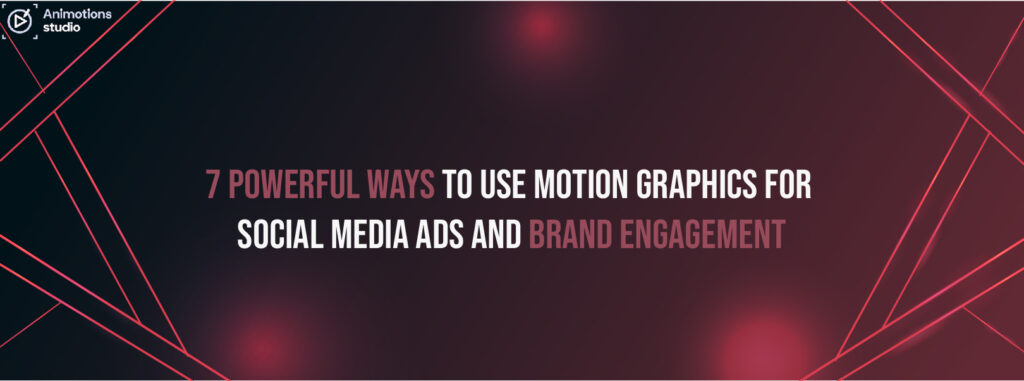
Looking to stand out on social media and create your digital marketing game? In 2025, digital marketing is more competitive than ever, making it essential for brands to leverage Motion Graphics for Social Media to capture attention, drive engagement, and boost conversions. The combination of movement, animation, and storytelling in Social Media Ads with Motion Graphics helps businesses create visually compelling content that stands out in crowded feeds. With the rise of short-form video content, brands are exploring Motion Graphics Marketing Strategies to enhance their ad campaigns and social media engagement. But how can businesses effectively integrate Best Motion Graphics for Ads into their marketing efforts? In this article, we’ll explore 7 powerful ways to use motion graphics for social media advertising, brand engagement, and marketing success in 2025. We’ll also cover How to Use Motion Graphics for Branding, look at Motion Graphics Trends 2025, and share practical tips on Animated Ads for Social Media that will help your brand grow. 1. Create Eye-Catching Animated Social Media Ads One of the most effective ways to utilize Motion Graphics for Social Media is through visually appealing Animated Ads for Social Media. Motion graphics allow brands to tell a story within seconds, keeping viewers engaged while delivering key marketing messages. How to Use Motion Graphics in Social Media Ads: ✔ Use smooth transitions to keep content visually appealing. ✔ Include bold typography and call-to-action (CTA) animations. ✔ Incorporate brand colors and logos to enhance brand recognition. ✔ Optimize for vertical formats (9:16) for TikTok, Instagram Reels, and YouTube Shorts. By incorporating Best Motion Graphics for Ads, brands can make their ad creatives more engaging and conversion-driven. 2. Boost Brand Engagement with Animated Content Brands looking to Boost Brand Engagement with Motion Graphics should focus on creating highly interactive and visually engaging animations. Motion graphics encourage users to like, comment, and share, increasing organic reach and engagement rates. Types of Engaging Motion Graphics for Branding: ✔ Polls & Quizzes with animated elements. ✔ Animated tutorials or how-to guides. ✔ Infographic animations presenting data in an exciting way. ✔ Looping GIFs and stickers for Instagram and Twitter. Interactive and engaging content is key to social media growth, and motion graphics make it easier to grab and hold audience attention. 3. Use Motion Graphics in Storytelling for Emotional Connection Storytelling is a fundamental aspect of brand marketing, and Motion Graphics Marketing Strategies can enhance the emotional appeal of your social media content. Motion graphics help simplify complex ideas, making them more relatable and easier to understand. How to Use Motion Graphics for Branding through Storytelling: ✔ Highlight customer testimonials with animated elements. ✔ Show behind-the-scenes processes with dynamic transitions. ✔ Use animated characters to convey emotions and brand personality. ✔ Create compelling explainer videos that communicate brand values. Story-driven Social Media Ads with Motion Graphics encourage emotional engagement, increasing customer trust and loyalty. 4. Leverage Animated Typography for Better Message Retention Text-based motion graphics are an excellent way to emphasize key messages while maintaining a strong visual presence. Motion Graphics for Social Media can transform simple text into a dynamic visual experience that captivates audiences. Best Practices for Animated Typography: ✔ Use kinetic typography to highlight brand slogans. ✔ Animate call-to-action phrases for better conversion rates. ✔ Sync text animations with background music for added impact. ✔ Keep animations smooth and readable across all screen sizes. With increasing competition for user attention, Best Motion Graphics for Ads involving animated typography make it easier for brands to communicate their messages effectively. 5. Motion Graphics for Product Demonstrations and Tutorials Explaining product features and benefits can be challenging in static images or long videos. Motion Graphics Marketing Strategies allow brands to create engaging product demonstrations that highlight functionality in a concise yet effective manner. How to Use Motion Graphics for Branding & Product Promotion: ✔ Create step-by-step animated guides for new product launches. ✔ Showcase product features with 3D animated visuals. ✔ Use explainer animations for software, apps, or digital services. ✔ Highlight key benefits through seamless motion transitions. With attention spans shrinking, using Animated Ads for Social Media to simplify product messaging is an excellent strategy for boosting conversions. 6. Optimize Motion Graphics for Different Social Media Platforms Different social media platforms require tailored motion graphics content to maximize engagement. Motion Graphics Trends 2025 show that platform-specific content performs better than one-size-fits-all designs. Platform-Specific Motion Graphics Optimization: ✔ Instagram & TikTok: Vertical motion graphics with fast-paced edits. ✔ Facebook & LinkedIn: Professional motion graphics with clear branding. ✔ YouTube & Twitter: Motion graphics optimized for both short and long-form content. ✔ Pinterest & Snapchat: Animated infographics and bite-sized video ads. Optimizing Social Media Ads with Motion Graphics for each platform ensures better engagement and content performance. 7. Stay Ahead with Motion Graphics Trends 2025 To remain competitive, brands must keep up with Motion Graphics Trends 2025 and apply new techniques to stay relevant. Key Motion Graphics Trends in 2025: ✔ AI-Generated Motion Graphics: More brands are using AI-powered animation tools. ✔ Hyper-Realistic 3D Animations: Real-time 3D rendering is becoming a trend. ✔ Interactive Motion Graphics: Brands are adding clickable elements to animations. ✔ Minimalist Animated Ads: Simple, clean animations with a focus on typography and movement. ✔ Seamless Transitions: Smooth, high-quality transitions that enhance storytelling. Following these trends will help brands create cutting-edge Motion Graphics for Social Media that drive engagement and brand growth. Final Thoughts: Mastering Motion Graphics for Social Media Marketing in 2025 By integrating Motion Graphics for Social Media, brands can create highly engaging content that captivates their audience and enhances ad performance. Whether you’re designing Social Media Ads with Motion Graphics, optimizing Motion Graphics Marketing Strategies, or experimenting with Motion Graphics Trends 2025, staying ahead in the digital marketing space requires creativity and adaptability. With the right approach to Best Motion Graphics for Ads, companies can Boost Brand Engagement with Motion Graphics, increase social shares, and strengthen brand recognition. By leveraging How to Use Motion Graphics for Branding, businesses can create
How to Create an Effective Animated Video Marketing Strategy: Tips and Guide in 2025
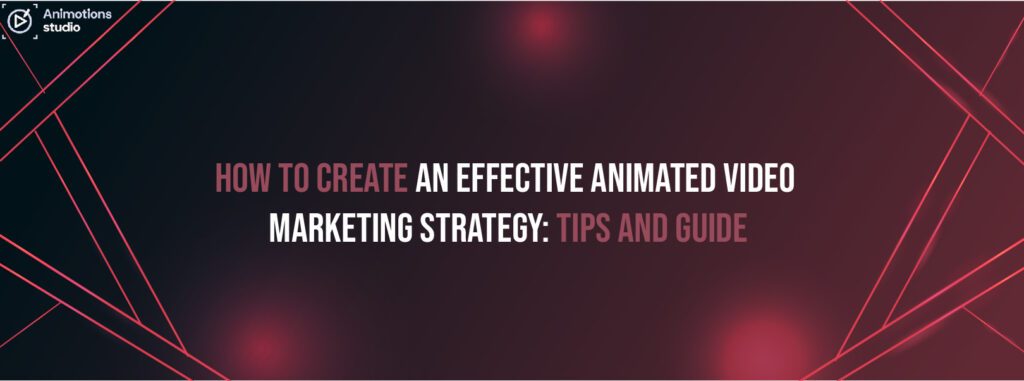
Creating animated videos requires careful planning, thorough research, and a significant investment of time to create content that establishes a personal connection and resonates deeply with your audience. When you utilize a professionally produced animated video, you can develop engaging content that captivates viewers in ways that traditional video formats may not achieve. In 2025, the demand for animated videos in digital marketing continues to rise as brands seek innovative ways to engage their audience. Developing a powerful Animated Video Marketing Strategy is crucial for businesses that want to stand out in a crowded marketplace. With evolving trends, it’s essential to stay updated with the latest Video Marketing Tips 2025 and understand How to Use Animation for Marketing effectively. In this comprehensive guide, we will explore the Best Animated Video Strategies, discuss Video Marketing Trends 2025, and provide actionable insights on How to Create Engaging Animated Videos that boost brand awareness and conversions. Additionally, we will cover Boost Sales with Animated Videos and present a complete Animated Video Advertising Guide for businesses looking to leverage animation in their marketing efforts. 1. Understanding the Importance of an Animated Video Marketing Strategy A well-planned Animated Video Marketing Strategy helps brands communicate their message clearly, build emotional connections, and increase engagement. In 2025, video content remains a dominant force, with animations standing out due to their visual appeal and storytelling capabilities. Key Benefits of Using Animated Videos for Marketing: ✔ Higher Engagement Rates: People prefer watching animated content over static visuals. ✔ Better Brand Recall: Animated videos make brands more memorable. ✔ Cost-Effective: Compared to live-action videos, animation is often more affordable. ✔ Versatile Use Cases: From social media ads to explainer videos, animations fit all marketing needs. ✔ SEO and Social Sharing: Video content improves SEO rankings and social media visibility. By integrating animation into marketing campaigns, businesses can enhance their brand presence and increase conversions. 2. Video Marketing Tips 2025: What’s Working Now? To develop an effective Animated Video Marketing Strategy, it’s essential to understand the latest Video Marketing Tips 2025 that drive engagement and sales. ✔ Short-Form Content Wins: Platforms like TikTok, Instagram Reels, and YouTube Shorts prioritize short, engaging videos. ✔ Personalization in Animation: Customized animated content based on audience preferences boosts engagement. ✔ Interactive Videos: Gamified and interactive animated videos improve user retention. ✔ AI-Powered Animation: AI tools speed up production and enhance creativity. ✔ Voice Search Optimization: Adding captions and transcripts to animated videos improves SEO. Implementing these Video Marketing Trends 2025 ensures your content remains relevant and impactful. 3. How to Use Animation for Marketing: A Step-by-Step Approach Knowing How to Use Animation for Marketing effectively requires strategic planning and execution. Follow these steps to create compelling animated videos: Step 1: Define Your Goals and Audience ✔ Identify the purpose of your animation (brand awareness, lead generation, sales, etc.). ✔ Understand your target audience’s preferences and pain points. ✔ Choose the right animation style (2D, 3D, whiteboard, motion graphics). Step 2: Develop a Strong Script and Storyboard ✔ Write a concise script that delivers a clear message. ✔ Create a storyboard to visualize the video flow and key scenes. ✔ Keep storytelling engaging with a beginning, middle, and call-to-action. Step 3: Choose the Right Animation Software or Tools ✔ Use tools like Adobe After Effects, Vyond, or Doodly for high-quality animations. ✔ Ensure compatibility with social media platforms for easy sharing. ✔ Optimize for mobile users, as most viewers consume videos on smartphones. Step 4: Incorporate Brand Elements and Voiceovers ✔ Add your brand’s colors, logo, and typography. ✔ Use professional voiceovers and background music to enhance engagement. ✔ Include subtitles for accessibility and better comprehension. Step 5: Optimize for Different Platforms ✔ Create different versions of your animated video for YouTube, Instagram, Facebook, and LinkedIn. ✔ Adjust video dimensions and lengths to suit each platform’s requirements. ✔ Test different formats (square, vertical, landscape) for maximum engagement. By following these steps, businesses can create highly engaging content that aligns with their marketing objectives. 4. Best Animated Video Strategies for Maximum Impact Implementing Best Animated Video Strategies can significantly enhance audience engagement and brand recognition. Here are some effective strategies to maximize results: ✔ Use a Strong Hook: The first 3-5 seconds should grab the viewer’s attention. ✔ Tell a Compelling Story: Emotional storytelling increases audience connection. ✔ Keep It Short and Sweet: Aim for 30-90 second videos for higher retention rates. ✔ Use Animated Explainer Videos: Ideal for breaking down complex topics simply. ✔ Include a Clear Call-to-Action (CTA): Direct viewers to subscribe, visit a website, or make a purchase. Adopting these strategies will help brands create animations that leave a lasting impression on their audience. 5. Video Marketing Trends 2025: What’s Next? Understanding Video Marketing Trends 2025 ensures that businesses stay ahead of the curve. Here are key trends shaping the future of animated video marketing: ✔ Augmented Reality (AR) and Animation Integration: AR filters and animations create immersive experiences. ✔ Live Animation Streams: Real-time animation used for Q&A sessions and live storytelling. ✔ Voice and AI-Generated Avatars: AI avatars delivering animated content personalized to users. ✔ Sustainable Video Production: More brands opting for eco-friendly animation practices. ✔ Microlearning Animated Content: Short educational animations becoming increasingly popular. Keeping up with these trends helps brands maintain a competitive edge in the digital landscape. 6. Boost Sales with Animated Videos: Why It Works Using animation in marketing isn’t just about engagement—it’s also about driving revenue. Boost Sales with Animated Videos by implementing the following tactics: ✔ Product Demos: Animated tutorials explaining product features boost conversions. ✔ Animated Testimonials: Customer stories in animated form build credibility. ✔ Sales Funnel Videos: Using animations at different funnel stages improves customer retention. ✔ Limited-Time Offers & Animated Ads: Motion-driven ads increase urgency and conversions. A well-optimized animated video strategy enhances the customer journey and directly impacts sales. 7. Animated Video Advertising Guide: Maximizing ROI An effective Animated Video Advertising Guide ensures brands maximize their return on investment. Here’s how to
Complete Guide to 3D Product Animation for Better Marketing, Engagement, and Sales in 2025

Imagine being able to put potential customers immerse themselves in an interactive environment, exploring your products long before they decide to buy. It might feel like a scene from a futuristic film, but thanks to the advancements in 3D product animation, this is now achievable. In this comprehensive guide, we will delve into the world of 3D animation and discover innovative ways it can elevate your marketing strategy. As businesses continue to embrace digital transformation, 3D Product Animation Guide has become an essential marketing tool. In 2025, brands are leveraging 3D Animation for Marketing to enhance product visualization, boost engagement, and increase sales. With the ability to create lifelike and interactive visuals, 3D Animated Ads for Engagement provide a unique and immersive experience for potential customers. Whether you’re in e-commerce, retail, or manufacturing, this guide will explore How to Create 3D Product Videos, share 3D Product Visualization Tips, and highlight Best 3D Animation Techniques to help your business stand out. By mastering Product Animation for E-commerce, you can Boost Sales with 3D Animation and maximize your brand’s digital presence. 1. What Is 3D Product Animation? 3D Product Animation Guide refers to the process of creating animated, three-dimensional representations of products to showcase their features, functionality, and design. Unlike static images, 3D Animation for Marketing allows businesses to present their products in an engaging and interactive manner. Key Benefits of 3D Product Animation: ✔ Increases Customer Engagement: Motion graphics capture audience attention more effectively than static images. ✔ Enhances Product Understanding: 3D animations allow viewers to see the product from all angles. ✔ Cost-Effective Marketing: Reduces the need for costly physical prototypes or live-action video shoots. ✔ Improves Brand Perception: A high-quality 3D Product Animation Guide helps establish credibility and professionalism. ✔ Better Conversion Rates: Well-crafted Product Animation for E-commerce leads to higher sales and improved ROI. 2. How to Create 3D Product Videos: Step-by-Step Guide Creating effective 3D Product Visualization Tips requires proper planning and execution. Here’s a step-by-step guide on How to Create 3D Product Videos for marketing: Step 1: Define Your Goals ✔ Determine the objective of the animation (brand awareness, product demo, advertising, etc.). ✔ Identify your target audience and their expectations. ✔ Choose the right animation style (realistic, stylized, technical, etc.). Step 2: Gather Product Data & References ✔ Collect CAD files, product blueprints, and high-resolution images. ✔ Create a detailed storyboard to outline key product features and movements. ✔ Decide on animation techniques that best highlight the product. Step 3: Model & Texture the Product ✔ Use software like Blender, Maya, or 3ds Max for 3D modeling. ✔ Apply realistic textures, lighting, and reflections to enhance visual appeal. ✔ Optimize the model for rendering efficiency and smooth animation playback. Step 4: Animate the Product ✔ Implement key Best 3D Animation Techniques such as motion blur, slow-motion, and dynamic camera angles. ✔ Ensure smooth transitions to highlight various product functions. ✔ Use physics-based simulations for accurate material behavior (e.g., soft-touch buttons, flexible parts). Step 5: Add Sound & Post-Production Enhancements ✔ Incorporate background music and voiceovers to make the video more engaging. ✔ Use motion graphics and text overlays to emphasize key product details. ✔ Perform final color grading and rendering for high-quality output. By following this structured process, brands can create compelling 3D Product Animation Guide videos that enhance marketing and customer engagement. 3. Best 3D Animation Techniques for Effective Marketing To maximize the impact of 3D Animation for Marketing, businesses must utilize Best 3D Animation Techniques that make product videos visually appealing and informative. ✔ Photorealistic Rendering: Ensures that animations look lifelike, making it easier for customers to visualize the product. ✔ 360-Degree Rotations: Allows viewers to explore the product from all angles. ✔ Exploded Views & Cutaways: Helps explain the internal structure and functionality of complex products. ✔ Augmented Reality (AR) Integration: Enables customers to see the product in their real-world environment. ✔ Interactive Clickable Elements: Improves user engagement by allowing them to interact with product features. Using these techniques, brands can create 3D Animated Ads for Engagement that drive audience interest and conversions. 4. Boost Sales with 3D Animation: Why It Works One of the main objectives of 3D Animation for Marketing is to Boost Sales with 3D Animation. Here’s why it’s so effective: ✔ Better Product Demonstration: 3D animation showcases product features that are difficult to capture in traditional photography. ✔ Increases Trust & Confidence: Seeing the product in action builds consumer trust and reduces purchase hesitation. ✔ Stronger Social Media Performance: 3D Animated Ads for Engagement generate more clicks and shares than static ads. ✔ Better SEO & Website Conversions: Interactive 3D product demos increase website dwell time and improve search rankings. ✔ Reduces Return Rates: Customers make informed buying decisions, reducing the likelihood of returns. These advantages make Product Animation for E-commerce a game-changer for brands looking to improve online sales and marketing effectiveness. 5. 3D Product Visualization Tips for Stunning Animations To create compelling animations, follow these essential 3D Product Visualization Tips: ✔ Use Realistic Lighting: Proper shadows and reflections enhance visual appeal. ✔ Optimize for Different Devices: Ensure compatibility across desktops, mobile devices, and VR platforms. ✔ Keep the Animation Smooth & Seamless: Sudden jumps or harsh movements can disrupt the user experience. ✔ Maintain a Clear Focus: Highlight key product features without overwhelming the viewer with unnecessary effects. ✔ Test & Iterate: Gather feedback and refine animations based on user responses. By implementing these techniques, brands can ensure that their 3D Product Animation Guide remains visually appealing and effective. 6. Product Animation for E-commerce: How It’s Changing Online Shopping With the rapid growth of online shopping, Product Animation for E-commerce is revolutionizing how businesses present and sell products. ✔ Virtual Showrooms: 3D animations allow customers to explore products online as if they were in a physical store. ✔ Customizable Product Demos: Users can change colors, materials, or configurations in real-time. ✔ Mobile-First Approach: Optimized animations provide a seamless experience for mobile shoppers. ✔ Integration with
What is Commercial Animation in 2025?
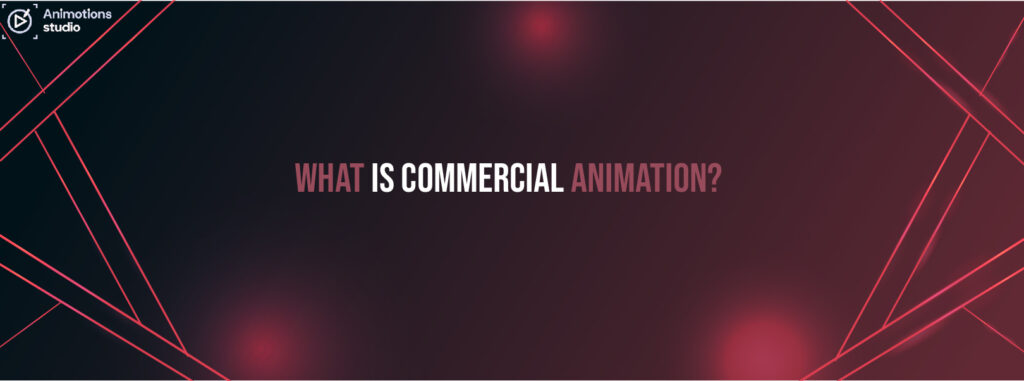
The world of animation continues to evolve, and in 2025, Commercial Animation Explained takes on an even greater role in digital marketing, branding, and advertising. But What is Commercial Animation? Simply put, it is the strategic use of animation in business, marketing, and brand storytelling to capture attention, engage audiences, and drive conversions. From animated advertisements and explainer videos to corporate branding and product promotions, Uses of Commercial Animation are diverse and powerful. Understanding Commercial Animation vs Traditional Animation can help businesses and creatives leverage animation more effectively in today’s competitive digital landscape. In this comprehensive guide, we will explore Best Commercial Animation Examples, dive into How Commercial Animation Works, highlight the Benefits of Commercial Animation, and discuss Commercial Animation for Marketing in 2025. 1. Commercial Animation Explained: Understanding Its Role in 2025 What is Commercial Animation? Commercial Animation refers to animated content created specifically for commercial or business purposes. Unlike traditional animation used in films and TV series, commercial animation is focused on marketing, advertisements, promotions, and brand storytelling. Key Characteristics of Commercial Animation: ✔ Short and Engaging: Typically designed for quick impact within a short span (e.g., 30-90 seconds). ✔ Visually Appealing: Uses high-quality graphics, motion effects, and storytelling techniques. ✔ Goal-Oriented: Aims to increase brand awareness, sales, or customer engagement. ✔ Versatile Formats: Includes animated explainer videos, product demos, digital ads, and social media clips. Understanding How Commercial Animation Works can help businesses make more strategic decisions when using animation in marketing campaigns. 2. Uses of Commercial Animation: Where and How It’s Applied Animation has become an essential tool for marketing and branding. Here are some common Uses of Commercial Animation in 2025: ✔ Advertising & Promotions: Animated commercials help brands promote products and services engagingly. ✔ Explainer Videos: Businesses use short animations to simplify complex topics for customers. ✔ Social Media Marketing: Animated content drives higher engagement on platforms like Instagram, TikTok, and Facebook. ✔ Brand Storytelling: Companies use animations to create strong brand identities and memorable content. ✔ E-Learning & Training: Corporations and educators use animations for training videos and online learning platforms. ✔ Corporate Presentations: Businesses use animated graphics in presentations for clearer communication. ✔ Product Demos & Prototypes: 3D animations showcase how a product works before it hits the market. By leveraging these Uses of Commercial Animation, businesses can create compelling content that resonates with their audience. 3. Commercial Animation vs Traditional Animation: Key Differences Many wonder about the distinction between Commercial Animation vs Traditional Animation. Here’s how they compare: Feature Commercial Animation Traditional Animation Purpose Marketing, branding, promotions Entertainment, storytelling Length Short-form (30-120 sec) Long-form (movies, series) Style 2D motion graphics, whiteboard, 3D animations Hand-drawn, stop-motion, 3D CG Audience Customers, businesses, social media users Moviegoers, TV audiences Monetization Used for advertising & brand promotions Ticket sales, subscriptions While traditional animation focuses on storytelling in entertainment, Commercial Animation for Marketing is goal-oriented and designed to influence purchasing decisions. 4. Best Commercial Animation Examples in 2025 Looking for inspiration? Here are some Best Commercial Animation Examples that are shaping the industry in 2025: ✔ Nike’s Motion-Graphic Campaigns: Nike uses sleek motion graphics and kinetic typography to enhance its video advertisements. ✔ Apple’s Animated Product Demos: Apple’s 3D-animated product launch videos showcase new technology in visually stunning ways. ✔ Coca-Cola’s Animated Storytelling Ads: Coca-Cola continues to use animated storytelling to create emotional connections with audiences. ✔ Tech Startups Using Explainer Videos: Companies like Zoom and Slack use animation to explain their services in engaging ways. ✔ Social Media GIF Ads: Brands are using short animated loops to grab attention in feeds and stories. Studying these Best Commercial Animation Examples can help businesses create impactful animated content. 5. How Commercial Animation Works: The Process Behind It Understanding How Commercial Animation Works can help businesses and marketers create effective campaigns. Here’s a breakdown of the process: Step 1: Define the Goal ✔ Determine the purpose: Is it an explainer video, social media ad, or product demo? ✔ Identify the target audience and their preferences. ✔ Establish a clear call-to-action (CTA) for the animation. Step 2: Create the Script & Storyboard ✔ Develop a concise script that delivers a clear and engaging message. ✔ Storyboard key visuals and motion flow to plan the animation structure. ✔ Align the animation’s tone with the brand identity. Step 3: Animation Production ✔ Choose the animation style (2D, 3D, motion graphics, whiteboard animation). ✔ Use industry-leading software like Adobe After Effects, Blender, or Cinema 4D. ✔ Ensure smooth transitions, eye-catching visuals, and professional sound design. Step 4: Optimization & Distribution ✔ Format the animation for different platforms (social media, websites, presentations). ✔ Use A/B testing to refine video engagement and impact. ✔ Leverage SEO and social media ads to maximize reach. By following these steps, brands can produce high-quality commercial animations that drive results. 6. Benefits of Commercial Animation: Why Businesses Need It There are several Benefits of Commercial Animation that make it an essential tool in marketing and branding: ✔ Increases Engagement: Animated videos hold viewers’ attention longer than static visuals. ✔ Enhances Brand Recognition: Unique animations help brands stand out in a crowded digital landscape. ✔ Boosts Conversion Rates: Well-executed animations lead to higher click-through and purchase rates. ✔ Cost-Effective: Animation is reusable and adaptable, reducing long-term production costs. ✔ Easily Shareable: Animated videos are highly shareable on social media, expanding brand visibility. ✔ Simplifies Complex Information: Ideal for explaining technical products and services in an easy-to-digest format. By understanding the Benefits of Commercial Animation, businesses can maximize their marketing efforts. 7. Commercial Animation for Marketing: Strategies for Success Using Commercial Animation for Marketing requires strategic planning to ensure effectiveness. Here are some key strategies: ✔ Tell a Story: Emotional storytelling in animation makes ads more relatable and engaging. ✔ Optimize for Mobile: Ensure videos are mobile-friendly for better social media reach. ✔ Keep It Short & Impactful: The best commercial animations deliver the message in 30-90 seconds. ✔ Use Animated Call-to-Actions (CTAs): Animated buttons and CTA text encourage
Interactive Animation: Techniques, Trends, and Future Innovations (Step-by-Step) in 2025

Interactive animation allows users to actively participate in the content, creating a dynamic experience beyond passive viewing. By incorporating interactive elements, brands can foster deeper connections with their audience, encouraging longer engagement and more memorable experiences. The world of animation is rapidly evolving, and Interactive Animation Techniques are at the forefront of this revolution. With new technological advancements, user engagement has become more immersive, making interactive animations a key element in web design, marketing, and entertainment. As we look towards the Future of Interactive Animation, businesses and creators are exploring innovative ways to make digital content more dynamic and engaging. This comprehensive guide explores Trends in Interactive Animation 2025, provides insights into How to Create Interactive Animations, and highlights Best Interactive Animation Tools to help designers and marketers create compelling visual experiences. Additionally, we will discuss Interactive Animation for Websites, the power of Interactive Motion Graphics, and Engaging Animation Strategies that ensure users stay connected with digital content longer. 1. Interactive Animation Techniques: How It Works What Are Interactive Animations? Interactive animations allow users to engage with digital elements through motion graphics, clickable areas, hover effects, and real-time interactivity. Unlike traditional animations, which are purely passive, interactive animations respond to user actions, enhancing engagement and usability. Key Elements of Interactive Animation: ✔ User Interactions: Animations respond to clicks, swipes, or mouse movements. ✔ Dynamic Transitions: Seamless motion between different UI components. ✔ Gamification Elements: Interactive storytelling and game-like features. ✔ Scroll-Based Animations: Animations that trigger as users scroll down a page. ✔ Hover Effects: Elements that animate when hovered over with a cursor. By implementing these Interactive Animation Techniques, designers can craft more engaging and intuitive digital experiences. 2. Trends in Interactive Animation 2025 Understanding Trends in Interactive Animation 2025 helps designers and brands stay ahead of the competition. Here are the most significant trends shaping the industry: ✔ AI-Driven Animation: Artificial intelligence is being used to automate animation processes and enhance interactivity. ✔ 3D Web Animation: More websites are integrating 3D animated elements for a more immersive experience. ✔ AR & VR Integration: Augmented and virtual reality animations allow users to interact with content in a more lifelike way. ✔ Voice & Gesture Control: Animations that respond to voice commands and hand movements. ✔ Micro-Interactions: Subtle animations that guide users through an interface. ✔ Real-Time Personalization: Adaptive animations that change based on user behavior. These trends indicate the increasing role of Interactive Motion Graphics in delivering cutting-edge digital experiences. 3. How to Create Interactive Animations: Step-by-Step Guide To successfully create interactive animations, follow these structured steps: Step 1: Define Your Objective ✔ Identify the purpose—whether it’s for a website, mobile app, or marketing campaign. ✔ Determine the key interactions that will enhance the user experience. ✔ Establish the animation style (2D, 3D, motion graphics, etc.). Step 2: Choose the Right Software ✔ Use Best Interactive Animation Tools such as Adobe Animate, Lottie, and GSAP. ✔ Consider game engines like Unity for highly interactive experiences. ✔ Use web animation libraries like Three.js for smooth browser-based animations. Step 3: Develop the Animation Framework ✔ Design wireframes and mockups to outline the user interactions. ✔ Use CSS, JavaScript, and SVGs for lightweight interactive animations. ✔ Integrate motion graphics with real-time user inputs. Step 4: Optimize for Performance ✔ Ensure animations load quickly without affecting page speed. ✔ Test across different devices and screen sizes. ✔ Use compressed files to reduce animation lag. Step 5: Test & Deploy ✔ Conduct A/B testing to determine the effectiveness of animations. ✔ Analyze user engagement metrics to measure success. ✔ Make iterative improvements based on user feedback. Following this step-by-step process ensures you master How to Create Interactive Animations effectively. 4. Best Interactive Animation Tools for Designers To execute Engaging Animation Strategies, using the right tools is essential. Here are some of the Best Interactive Animation Tools in 2025: ✔ Adobe Animate: Ideal for web-based interactive animations. ✔ Lottie (by Airbnb): Great for creating lightweight animations for websites and mobile apps. ✔ GSAP (GreenSock Animation Platform): A powerful JavaScript library for high-performance animations. ✔ Spline: A 3D web animation tool for creating interactive elements. ✔ Rive: Enables designers to create real-time interactive animations. ✔ Three.js: A JavaScript library for rendering 3D animations in the browser. ✔ Unity & Unreal Engine: Perfect for game and VR-based interactive animations. These tools allow designers to bring ideas to life and make content visually engaging. 5. Interactive Animation for Websites: Enhancing UX & Engagement One of the biggest applications of interactive animations is in website design. Interactive Animation for Websites helps businesses improve user engagement, increase conversions, and create memorable digital experiences. Best Practices for Website Animations: ✔ Use Scroll Animations: Animate elements as users scroll through the page. ✔ Incorporate Hover Effects: Make buttons and UI elements interactive. ✔ Add Loading Animations: Keep users engaged while pages load. ✔ Create Interactive Infographics: Allow users to click and explore content visually. ✔ Implement Animated Backgrounds: Use subtle animations for an immersive effect. A well-designed interactive website not only attracts visitors but also keeps them engaged longer. 6. Interactive Motion Graphics: Bringing Static Content to Life Static images no longer capture attention as they once did. Interactive Motion Graphics provide a fresh way to make digital content more appealing and engaging. Where to Use Interactive Motion Graphics: ✔ Marketing & Advertising: Animated ads perform better than static ones. ✔ E-Learning: Interactive motion graphics make online courses more engaging. ✔ Social Media: GIFs and micro-animations drive better social media engagement. ✔ Corporate Presentations: Adds a dynamic touch to traditional slideshows. ✔ Product Demos: Showcases how products work interactively. With advancements in animation technology, Interactive Motion Graphics are becoming an essential part of digital media strategies. 7. Engaging Animation Strategies for Maximum Impact To create highly effective interactive animations, implement these Engaging Animation Strategies: ✔ Keep Animations Purposeful: Avoid unnecessary animations that slow down the experience. ✔ Balance Simplicity & Creativity: Ensure animations enhance rather than distract from the message. ✔ Encourage
Animation Ideas and Concepts for Beginners: Essential Tips for Success in 2025
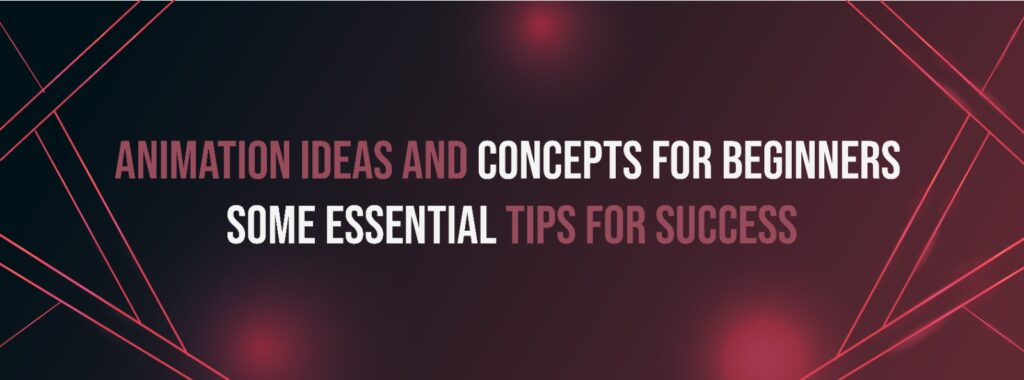
Animation is no longer limited to large studios or professionals. In 2025, more people than ever are diving into the world of animation thanks to accessible software, online learning resources, and affordable tools. Whether you’re a student, hobbyist, or aspiring animator, understanding the Basics of Animation for Beginners is essential to get started on the right foot. This comprehensive guide explores Animation Ideas for Beginners, introduces key Beginner Animation Concepts, shares Essential Animation Tips, and breaks down the Best Animation Techniques for Beginners to set you up for creative success. Whether you want to animate simple characters, tell a story, or bring your designs to life, this guide will walk you through the essentials. 1. How to Start Animation: A Beginner’s Perspective If you’ve ever wondered How to Start Animation, you’re not alone. The good news is that animation is more accessible than ever. Here’s how you can begin your journey in animation: ✔ Choose Your Animation Type: Decide whether you want to explore 2D, 3D, stop-motion, or motion graphics. ✔ Pick Beginner-Friendly Tools: Start with intuitive software like Pencil2D, OpenToonz, or Krita. ✔ Learn the Basics: Focus on frame-by-frame animation, keyframes, and timing. ✔ Follow Online Tutorials: Platforms like YouTube and Skillshare offer great beginner courses. ✔ Start Small: Work on short animation loops before jumping into complex projects. Following this path gives you a solid foundation to experiment with Creative Animation Ideas and grow your skills. 2. Beginner Animation Concepts: What You Need to Know Mastering Beginner Animation Concepts is the key to building a successful animation workflow. These core ideas are essential to every animation, regardless of the style or tool you use. Key Concepts: ✔ Timing and Spacing: Determines how fast or slow objects move and how smooth the animation feels. ✔ Squash and Stretch: Adds elasticity and life to characters. ✔ Anticipation: Prepares the audience for the main action, making movement feel natural. ✔ Ease In and Ease Out: Slows down animation at the beginning or end for more realism. ✔ Follow-Through and Overlapping Action: Makes animation more dynamic and fluid. These foundational principles help you create believable motion and are part of the Best Animation Techniques for Beginners. 3. Animation Ideas for Beginners: Creative and Fun Projects Coming up with Animation Ideas for Beginners can be challenging, but the key is to start with simple, achievable goals. Here are a few Creative Animation Ideas to try: ✔ Bouncing Ball Animation: Practice squash, stretch, and timing. ✔ Walk Cycle: A basic but crucial project that teaches character movement. ✔ Animating a Face Emoji: Use simple shapes to express emotions. ✔ Object Transformation: Animate one object morphing into another. ✔ Looping GIFs: Create short, shareable animations for social media. ✔ Simple Dialogue Scenes: Animate a conversation using basic mouth shapes and timing. These projects allow beginners to experiment and apply Essential Animation Tips in a hands-on way. 4. Essential Animation Tips for Beginners Learning animation takes time, but following these Essential Animation Tips can speed up your progress: ✔ Keep It Simple: Don’t try to create a Pixar-level short on your first try. ✔ Use Reference Footage: Study real-life movement to understand natural motion. ✔ Plan Before You Animate: Use storyboards and thumbnails to map out your ideas. ✔ Test Constantly: Play back your animation frequently to catch mistakes early. ✔ Stay Consistent: Use consistent frame rates and sizes for smoother results. ✔ Seek Feedback: Join online animation communities and ask for constructive criticism. Applying these tips ensures your learning curve is steep yet enjoyable. 5. Best Animation Techniques for Beginners in 2025 Here are the Best Animation Techniques for Beginners that are trending in 2025: ✔ Frame-by-Frame Animation: Master traditional animation by drawing each frame. ✔ Cut-Out Animation: Use digital puppets or layers to animate characters easily. ✔ Tweening: Let the software generate frames between two positions for smooth transitions. ✔ Onion Skinning: Helps track the movement of previous frames while animating. ✔ Motion Capture (MoCap): Some beginner tools now include simple motion tracking features. ✔ Lip Syncing: Sync animated characters to voice recordings. These techniques will help you create polished animations even as a beginner. 6. Step-by-Step Animation Guide: From Concept to Creation This Step-by-Step Animation Guide walks you through the basic workflow from idea to finished animation: Step 1: Brainstorm Your Concept ✔ Come up with a short scene or story. ✔ Decide the tone (funny, emotional, educational, etc.). Step 2: Write a Script or Outline ✔ Even for a short project, having a script helps you stay organized. Step 3: Create a Storyboard ✔ Sketch each major scene or action. ✔ Think about camera angles and timing. Step 4: Design Characters & Backgrounds ✔ Keep designs simple and adaptable. ✔ Use digital tools or draw by hand. Step 5: Animate ✔ Set your frame rate (12–24 FPS is standard). ✔ Start with key poses, then add in-between frames. ✔ Use layers for different parts of your animation. Step 6: Add Sound ✔ Use free sound effects and royalty-free music. ✔ Record dialogue if needed. Step 7: Export & Share ✔ Render your video in MP4 or GIF format. ✔ Share on YouTube, TikTok, or art platforms. This structured workflow will help you stay focused and build confidence as you explore more complex animations. 7. Basics of Animation for Beginners: Must-Know Fundamentals Before diving deeper, it’s important to grasp the Basics of Animation for Beginners, which form the foundation of all animation styles. Core Fundamentals: ✔ Keyframes: Main frames that mark important positions or changes in the animation. ✔ In-betweens: The frames between keyframes that create motion. ✔ Frame Rate: The number of frames shown per second. More frames = smoother animation. ✔ Timing: Affects the rhythm and speed of the movement. ✔ Storytelling: Even a short animation should have a clear beginning, middle, and end. Understanding these basics ensures you create animations that are not only technically sound but also emotionally resonant. 8. Animation Tools and Software for Beginners in 2025
SaaS Explainer Video That Drives Engagement and Conversions: A Step-by-Step Guide in 2025

The Importance of Explainer Videos in the SaaS Industry: In 2025, attention spans are shorter, and competition in the SaaS (Software as a Service) industry is more fierce than ever. To stand out and connect with potential customers, businesses are turning to animated videos as a powerful communication tool. A well-executed SaaS Explainer Video Guide can help companies simplify complex solutions, build trust, and convert viewers into paying customers. This comprehensive guide will walk you through How to Create SaaS Explainer Videos, develop an effective SaaS Video Marketing Strategy, and understand the SaaS Explainer Video Best Practices that ensure your content is engaging and effective. We’ll also showcase examples of the Best Explainer Videos for SaaS and explore how to Increase Conversions with SaaS Videos. 1. Why SaaS Companies Need Explainer Videos in 2025 SaaS products often deal with abstract, technical, or complex topics that can be difficult for the average consumer to understand. This is where Animated Explainer Videos for SaaS come in. These videos offer a concise, visual, and emotionally engaging format to explain a product’s value proposition. Key Benefits of Explainer Videos for SaaS: ✔ Simplify Complex Information ✔ Boost Engagement and Retention ✔ Increase Brand Awareness ✔ Improve Conversion Rates ✔ Support SEO and Website Performance Explainer videos are no longer a nice-to-have—they’re a necessity in a modern SaaS Video Marketing Strategy. 2. SaaS Explainer Video Guide: Step-by-Step Process Creating a high-quality explainer video isn’t just about animation. It’s about telling a compelling story that aligns with your brand and speaks directly to your audience. This SaaS Explainer Video Guide breaks down the creation process into actionable steps. Step 1: Define Your Goal ✔ What action do you want viewers to take? Sign up, subscribe, learn more? ✔ Define your video’s key performance indicators (KPIs). ✔ Keep your CTA (Call-To-Action) clear and concise. Step 2: Understand Your Audience ✔ Identify your buyer persona. ✔ Address their pain points and expectations. ✔ Tailor your tone and messaging accordingly. Step 3: Develop the Script ✔ Start with a hook to grab attention in the first 5 seconds. ✔ Explain the problem and introduce your solution. ✔ Show how your product works (without too much jargon). ✔ Add social proof or testimonials. ✔ End with a strong CTA. Step 4: Choose the Animation Style ✔ 2D Animation ✔ Motion Graphics ✔ Whiteboard Style ✔ 3D Animation Animated Explainer Videos for SaaS often use motion graphics to visually demonstrate app interfaces and user flows. Step 5: Voiceover and Sound Design ✔ Choose a professional voice actor that fits your brand. ✔ Use background music that supports the tone. ✔ Include sound effects for interaction cues. Step 6: Production & Editing ✔ Use animation tools like After Effects, Vyond, or Blender. ✔ Keep branding consistent with colors, fonts, and logo. ✔ Optimize the video length (60–90 seconds is ideal). Step 7: Launch and Promote ✔ Host it on your homepage or landing page. ✔ Share it on social media and email campaigns. ✔ Use it in onboarding sequences and sales presentations. This structured Step-by-Step SaaS Explainer Video Guide ensures your final product aligns with your business objectives and user needs. 3. How to Create SaaS Explainer Videos That Convert Creating a video that just looks good isn’t enough. You need content that converts. Here’s How to Create SaaS Explainer Videos that truly move the needle: ✔ Focus on Benefits, Not Features People care about how your product helps them—not just what it does. ✔ Keep It Short and Simple Aim for 60–90 seconds. Attention drops after the 1-minute mark. ✔ Use a Clear Visual Hierarchy Guide viewers’ eyes to the most important information. ✔ Include a Strong Hook The first 5 seconds determine whether someone will keep watching. ✔ Incorporate Testimonials or Case Studies Build trust and authority with real-world use cases. ✔ End with a Direct CTA Make it clear what you want the viewer to do next. If you master these elements, your video becomes a sales tool that can work 24/7. 4. SaaS Explainer Video Best Practices in 2025 The digital landscape is constantly evolving. Here are the latest SaaS Explainer Video Best Practices for success in 2025: ✔ Mobile-Optimized Videos Ensure your video plays perfectly on mobile devices. ✔ Personalization Adapt your videos for different audience segments using dynamic video tools. ✔ Closed Captions and Accessibility Make your video accessible to all users, including the hearing-impaired. ✔ Localization Offer translated versions for different regions to expand your global reach. ✔ SEO-Friendly Metadata Include keywords in the title, description, and tags for better discoverability. ✔ A/B Testing Test different versions of your video (voiceovers, scripts, CTAs) to find what performs best. Implementing these tips will elevate your video performance across platforms and user demographics. 5. Best Explainer Videos for SaaS: Examples to Inspire You To get a clearer idea of what works, let’s examine some of the Best Explainer Videos for SaaS companies: Dropbox One of the earliest examples of a simple yet effective SaaS explainer. It clearly communicated the cloud storage concept using simple visuals and storytelling. Slack Their explainer video highlights collaboration benefits with clean motion graphics and a conversational tone. Notion Uses a stylish, minimalist animation that reflects the brand. It focuses on real-world use cases and productivity improvements. HubSpot CRM Features animated UI walkthroughs, demonstrating how easy it is to manage customers and leads. These videos exemplify best-in-class practices for clarity, engagement, and conversion. 6. Increase Conversions with SaaS Videos If you’re aiming to Increase Conversions with SaaS Videos, here’s how to make it happen: ✔ Place Videos Above the Fold Position your explainer video at the top of your landing page. ✔ Use Video in Email Marketing Including videos in emails can boost CTR by up to 300%. ✔ Add a CTA Overlay or End Card Give viewers a way to act immediately after watching. ✔ Use Retargeting Ads with Video Re-engage visitors who didn’t convert the first time. ✔ Integrate Videos
How to Use Data Analytics to Improve Your Explainer Video Strategy: A Step-by-Step Guide in 2025
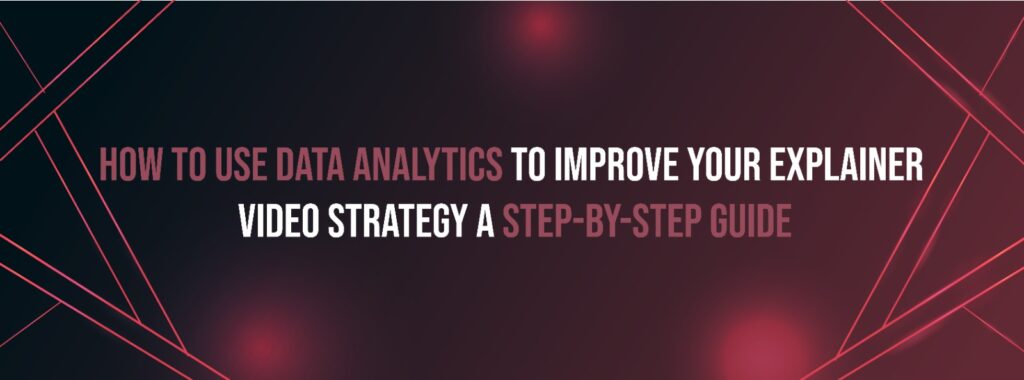
In 2025, video continues to dominate digital marketing, especially in the SaaS industry. However, creating high-quality content isn’t enough. To ensure your SaaS Explainer Video Guide delivers maximum impact, data analytics must be at the heart of your strategy. Understanding what works, what doesn’t, and why is the key to building scalable video content that drives growth. This blog will walk you through how to use analytics to enhance your SaaS Video Marketing Strategy, improve Engaging SaaS Video Content, and craft Animated Explainer Videos for SaaS that convert. Whether you’re a marketer, founder, or content strategist, this guide will show you how to create smarter, data-driven explainer videos from start to finish. 1. Why Data Analytics Matters for Explainer Videos in SaaS Before diving into tools and tactics, it’s essential to understand why data is a game-changer. The SaaS industry thrives on metrics. Similarly, your explainer videos should be optimized not by guesswork, but by measurable performance. Key Benefits of Data-Driven Explainer Videos: With these insights, you can apply SaaS Explainer Video Best Practices with precision and confidence. 2. Set Goals for Your Explainer Video Campaigns The first step in optimizing your SaaS Explainer Video Strategy with analytics is to define clear goals. Common Objectives: ✔ Increase free trial sign-ups ✔ Boost product awareness ✔ Drive email newsletter subscriptions ✔ Support onboarding and product adoption ✔ Improve landing page conversions Once your KPIs are set, you can track them using video analytics tools to measure how well your Animated Explainer Videos for SaaS support those objectives. 3. Key Metrics to Track for Explainer Video Performance Knowing which metrics to monitor can mean the difference between a successful campaign and a missed opportunity. Here are the most important metrics when analyzing Engaging SaaS Video Content: View-Through Rate (VTR) Shows the percentage of viewers who watched your video to the end. A low VTR may indicate that your video is too long or not engaging enough. Average Watch Time A high average indicates that your content holds attention. Click-Through Rate (CTR) How many viewers clicked your CTA or external link. This is a direct indicator of whether your video motivates action. Conversion Rate What percentage of viewers took the desired action after watching? This is a key metric in measuring Increase Conversions with SaaS Videos. Bounce Rate If your video is embedded on a landing page, high bounce rates could mean the video isn’t aligned with user expectations. 4. Tools to Analyze SaaS Explainer Videos Effectively To gather insights from your video content, you’ll need the right tools. Here are the most popular analytics platforms for video: ✔ Wistia – Offers heatmaps, engagement graphs, and CTAs built into the video. ✔ Vimeo Business – Provides advanced analytics and A/B testing. ✔ YouTube Studio – Great for reach, audience retention, and demographics. ✔ Vidyard – Designed for B2B with strong CRM integration. ✔ Google Analytics – Track video engagement via event tracking. Integrating these tools into your SaaS Explainer Video Guide will empower your team with data-backed decisions. 5. Segment Your Audience for Personalized Video Strategies Not all viewers are alike. By using analytics to understand different segments, you can tailor your SaaS Video Marketing Strategy to each group. Segment By: ✔ Traffic source (organic, paid, social, referral) ✔ Viewing device (mobile, desktop, tablet) ✔ Location and language ✔ Behavior on site before and after viewing ✔ Buyer stage (awareness, consideration, decision) This allows you to create Engaging SaaS Video Content that speaks directly to the audience’s needs and increases relevance. 6. A/B Testing for SaaS Explainer Videos One of the most effective ways to optimize your video is through A/B testing. You can compare two versions of a video with slight variations and see which performs better. Test Variables: ✔ Script or voiceover ✔ CTA placement and design ✔ Video length ✔ Color themes and branding ✔ Background music or effects By continuously testing and refining, you’ll discover the formula that leads to the Best Explainer Videos for SaaS. 7. Using Data to Improve the Script and Storyline Great explainer videos start with great storytelling. Analytics can provide insight into how well your narrative resonates with viewers. ✔ If drop-off rates are high early, revise your hook or opening. ✔ If viewers pause or replay certain sections, expand on those points. ✔ If CTA engagement is low, consider adjusting your message clarity or placement. These insights can be looped back into your scripting process for How to Create SaaS Explainer Videos that are compelling and clear. 8. Optimizing Length and Timing with Data In 2025, attention spans are still shrinking. Use analytics to determine the ideal length of your explainer videos. ✔ Aim for 60–90 seconds based on average watch time trends. ✔ Keep key points and value props in the first 30 seconds. ✔ Don’t bury your CTA at the very end—consider mid-roll CTAs. Data can show you exactly when users start to drop off, allowing you to restructure videos for better retention. 9. Enhancing CTAs Based on Conversion Data The call-to-action (CTA) is where the magic happens. Whether it’s signing up for a trial or booking a demo, your CTA must be optimized to perform. Tips: ✔ Use action-driven language (“Start Your Free Trial Now” vs. “Learn More”) ✔ Experiment with different CTA types (button, form, video overlay) ✔ Use heatmaps to see where users are clicking ✔ Analyze time-to-click data for CTA timing When used properly, CTAs can dramatically Increase Conversions with SaaS Videos. 10. Incorporating Feedback and Behavior Patterns User behavior and qualitative feedback are just as important as quantitative data. ✔ Use in-video surveys or feedback forms ✔ Monitor comment sections and user reviews ✔ Track behavioral signals like rewatches, pauses, or exits Patterns in these behaviors offer insights into how to make your Animated Explainer Videos for SaaS more engaging and educational. 11. Using Analytics for Cross-Channel Video Performance Your video’s performance varies by platform. Monitor how the same video performs across: ✔ Website landing
8 Inspiring Blockchain Animation Explainer Videos for Your Business Success and Growth in 2025
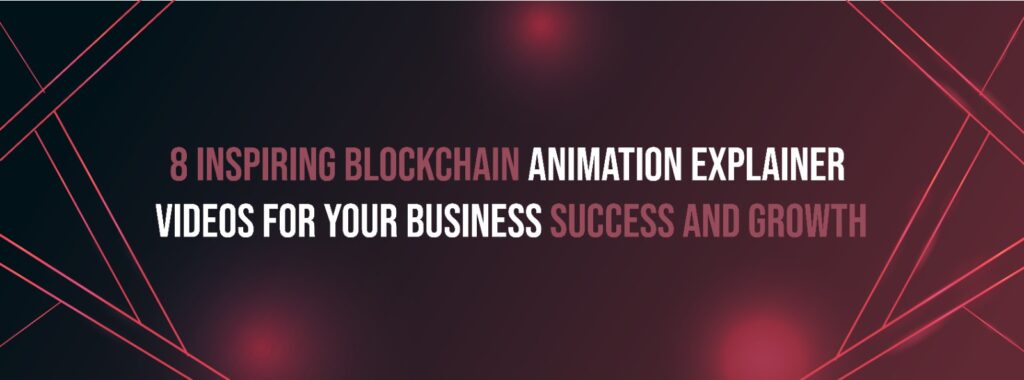
As blockchain technology continues to reshape industries in 2025, businesses are racing to simplify complex ideas and communicate their value proposition. One of the most powerful tools to bridge that gap is animation. Blockchain Explainer Videos have become a go-to medium for startups, crypto companies, DeFi platforms, and Web3 brands to capture attention and educate audiences. This blog highlights 8 exceptional Animated Blockchain Videos that are driving business success and user engagement. You’ll also learn how to implement a Blockchain Video Marketing Strategy, use Blockchain Animation for Business effectively, and create Engaging Blockchain Video Content that helps your company stand out. Let’s explore these inspiring examples and extract tips to boost your blockchain brand’s growth. Why Blockchain Needs Explainer Videos in 2025 Blockchain and Web3 technologies are notoriously complex. Terms like decentralization, smart contracts, NFTs, staking, and DAOs can be overwhelming to new users or investors. Animated Videos for Blockchain Growth break down these ideas into easy-to-digest, visual content that keeps audiences engaged. Benefits of Blockchain Explainer Videos: With visually appealing storytelling, companies are turning Animated Blockchain Videos into powerful growth tools. 1. Ethereum (Foundation Explainer) Ethereum’s official explainer video uses abstract animation and minimalist design to showcase the blockchain’s core concepts. It outlines smart contracts, the Ethereum Virtual Machine (EVM), and decentralized applications in a way that’s accessible to non-technical viewers. ✔ Visual metaphor for smart contracts ✔ Simple narration and soothing tone ✔ Effective balance of animation and messaging This video is a model of clarity, ideal for brands learning How to Use Blockchain Animation to communicate fundamental principles. 2. Chainlink (Oracles Explained) Chainlink’s animated explainer highlights its role as a bridge between smart contracts and real-world data. It uses motion graphics and data visualizations to demonstrate how oracles function. ✔ Crisp, tech-driven design ✔ Clear CTA at the end for developers ✔ Strong educational component This example shows how Blockchain Explainer Videos can position a project as a thought leader by simplifying a niche concept. 3. Binance Academy (What Is Blockchain?) Binance Academy released an animated video that explains blockchain at a beginner level. The use of bright colors, illustrations, and analogies like “a chain of blocks” makes the video fun and engaging. ✔ Excellent entry-level resource ✔ Explains decentralization with animations ✔ Animated metaphors improve understanding If your business targets crypto newbies, this style of Engaging Blockchain Video Content can win trust and boost your credibility. 4. Ripple (Internet of Value) Ripple’s animated explainer titled “The Internet of Value” discusses the future of global payments. It uses futuristic animation and typography to show how RippleNet enables cross-border transactions. ✔ Bold and sleek visuals ✔ Professional voiceover with high production quality ✔ Strategic storytelling on financial freedom This video exemplifies Blockchain Animation for Business with a focus on economic empowerment and global scalability. 5. IBM Blockchain (Supply Chain Use Case) IBM created an animated explainer that demonstrates how blockchain enhances supply chain transparency. The video follows the journey of a mango from farm to supermarket, using simple characters and 2D animation. ✔ Real-world use case makes it relatable ✔ Strong narrative flow ✔ Clear illustration of data traceability This is one of the Best Blockchain Explainer Videos that shows practical value, making it ideal for B2B campaigns. 6. Polkadot (Connecting Blockchains) Polkadot’s animated video visualizes how its network enables different blockchains to interact. It uses vivid illustrations and dynamic motion design to simplify interoperability. ✔ Colorful, energetic animation ✔ Technical concepts explained visually ✔ Emphasizes community and innovation If your product deals with multi-chain architecture, this style of Animated Blockchain Videos is a great reference. 7. Coinbase (Intro to Crypto Wallets) Coinbase uses animation to explain how crypto wallets work, showing hot vs. cold storage, private keys, and user security. It’s part of their educational onboarding series. ✔ High accessibility ✔ Focuses on user safety ✔ Great for product adoption This aligns perfectly with Blockchain Video Marketing Strategy—educating users while building brand trust. 8. Avalanche (Fast and Scalable Blockchain) Avalanche’s explainer video showcases its speed and scalability compared to other blockchains. It uses motion design, charts, and comparison animations to drive home key differentiators. ✔ Positioning against competitors ✔ Highlights performance metrics visually ✔ Modern and sleek design If you’re targeting investors or developers, this approach to Animated Videos for Blockchain Growth can demonstrate your technical superiority. How to Use Blockchain Animation Effectively Animation is not just about pretty visuals—it’s about telling a story. Here’s How to Use Blockchain Animation to enhance your business message: ✔ Know Your Audience: Use beginner-friendly language for general users or technical visuals for developers. ✔ Define Your Goal: Awareness, education, sign-ups, investment—each goal needs a tailored message. ✔ Use Metaphors: Visual metaphors help explain abstract ideas like decentralization or tokenomics. ✔ Focus on Clarity: Avoid unnecessary complexity. Break information into easy steps. ✔ Keep it Short: Aim for 60–90 seconds for maximum engagement. These principles will keep your Blockchain Video Marketing Strategy focused and effective. Best Practices for Blockchain Explainer Videos in 2025 To create standout blockchain explainer videos, follow these updated best practices: ✅ Keep Branding Consistent Use your colors, typography, and voice to strengthen brand identity. ✅ Optimize for Mobile Most viewers will be on mobile devices—ensure your animations and subtitles are mobile-friendly. ✅ Add Captions Accessibility matters, and subtitles boost view time on silent autoplay platforms. ✅ Include a Clear CTA Encourage viewers to sign up, try a demo, or visit your website. ✅ Distribute Smartly Post on YouTube, X (Twitter), TikTok, and integrate on your landing pages. These SaaS Explainer Video Best Practices adapted for blockchain help drive engagement. Developing a Blockchain Video Marketing Strategy Here’s how to build a robust Blockchain Video Marketing Strategy for 2025: 🎯 Identify Key Goals: 🎥 Choose the Right Format: 📈 Measure Results: A strategic, metric-driven approach ensures your Blockchain Explainer Videos deliver ROI. Why Animated Blockchain Videos Work for Every Business From startups to enterprise tech, Animated Blockchain Videos are versatile and cost-effective. Whether you’re introducing a new token,
The Role of Animation in E-Commerce Websites: Tips and Best Practices in 2025

In 2025, online shopping is more visual and interactive than ever. With consumers demanding faster, smoother, and more personalized experiences, e-commerce brands must stay ahead of design trends. One of the most transformative tools available today is animation. Whether it’s a subtle hover effect, a dynamic product display, or immersive micro-interactions, Animation in E-Commerce enhances user engagement and encourages conversions. In this blog, we explore how E-Commerce Website Animation is changing the way users interact with digital storefronts. We’ll dive into practical strategies, discuss how to Boost Sales with Animation, and outline Best Animation Practices for Online Stores to help you elevate your brand experience and maximize ROI. 1. Why Animation Matters in E-Commerce Websites The use of Website Animation for Better Conversions is not just a trend—it’s a vital UX strategy. Thoughtfully implemented animations help guide visitors, make websites feel more alive, and provide visual feedback that builds trust. Key Benefits of Animation in E-Commerce: Incorporating Interactive Animations for Online Shopping also improves memorability, which can lead to more return visits and brand loyalty. 2. Types of E-Commerce Website Animation That Work in 2025 Animation can be as subtle or complex as needed, depending on your product, audience, and brand identity. Here are the most effective types of E-Commerce Website Animation being used today: ✅ Micro-Interactions Small animations triggered by user actions like clicks, scrolls, or hovers. They offer real-time feedback, making the experience feel intuitive. ✅ Loading Animations Spinners, progress bars, or creative loaders keep users engaged during wait times and reduce perceived loading time. ✅ Product Reveal Animations Smooth transitions when showcasing products help users better understand the features and variations. ✅ Scroll-Triggered Animations These guide the user’s journey by revealing content as they scroll, making the experience interactive and exploratory. ✅ Hover Effects Hover states enhance interactivity and prompt user curiosity, such as zooming into product images. These techniques make Using Motion Graphics in E-Commerce more engaging and functional. 3. How Animation Enhances UX in E-Commerce A smooth and pleasant shopping experience translates directly into higher sales and customer satisfaction. Let’s look at How Animation Enhances UX in E-Commerce platforms: 🛒 Visual Hierarchy Animations can draw attention to CTAs, highlight featured products, and help users navigate. 🛒 User Guidance Animated progress indicators in a checkout flow provide clarity on how many steps are left. 🛒 Emotional Connection Motion adds personality and can convey a brand’s tone and emotion more effectively than static visuals. 🛒 Mobile Experience On mobile devices, animations help replace hover functions, supporting gestures like swipes and taps. By elevating UX, businesses can Boost Sales with Animation organically. 4. Boost Sales with Animation: Real Results Let’s look at how companies are leveraging animation to drive measurable growth. 🛍️ Case Study: ASOS ASOS uses smooth hover animations, dynamic product galleries, and subtle loading indicators. These features reduced bounce rates and increased conversion by 18% in A/B tests. 🛍️ Case Study: Apple Apple’s product pages use Interactive Animations for Online Shopping to guide users through key features with precision and elegance. 🛍️ Case Study: Warby Parker Warby Parker implemented animations in their virtual try-on process. This not only improved engagement but also reduced return rates by 21%. These examples highlight how E-Commerce Website Animation drives customer trust and sales. 5. Best Animation Practices for Online Stores in 2025 Not all animations help. Poorly implemented ones can slow down a site or overwhelm users. Here are the Best Animation Practices for Online Stores to follow: ✅ Prioritize Speed Animations should be optimized to avoid negatively impacting page load time. Lightweight code and compressed assets are crucial. ✅ Keep It Purposeful Every animation should have a purpose. Don’t animate just for flair—make sure it contributes to navigation or product clarity. ✅ Align With Brand Identity The tone, speed, and style of animations should align with your brand’s personality. ✅ Make It Optional If using large animations or interactions, ensure users can skip or disable them for accessibility. ✅ Use Repetition Sparingly Repeated animations can feel annoying. Limit them on elements like banners or CTA buttons. ✅ Consider Accessibility Animations should be compliant with accessibility guidelines. Use prefers-reduced-motion CSS queries when needed. Following these practices ensures your E-Commerce Website Animation supports—not distracts from—your core goals. 6. Tools for Adding Animation to Your E-Commerce Website Whether you use Shopify, WooCommerce, Magento, or a custom CMS, there are tools and libraries that make implementing animations easier: ✔ LottieFiles – Lightweight animation files built in After Effects and rendered as JSON. ✔ GSAP (GreenSock) – Advanced JS animation library for web interfaces. ✔ Framer Motion – React-based animation library for smooth, dynamic transitions. ✔ Rive – Real-time interactive motion graphics that support logic-based animations. ✔ Adobe Animate – Professional design tool for complex motion sequences. These tools help brands achieve rich Website Animation for Better Conversions without compromising speed. 7. Where to Use Animation Strategically in E-Commerce Pages Let’s break down where animations can be most impactful across the buyer journey: 🧭 Homepage: ✔ Hero image reveals ✔ Scroll-triggered product highlights ✔ Featured product animations 🧭 Product Pages: ✔ 360-degree views ✔ Option selectors (size, color) ✔ Zoom and pan image effects 🧭 Category Pages: ✔ Animated filters and sorting options ✔ Hover-to-preview product tiles 🧭 Cart & Checkout: ✔ Animated cart updates ✔ Progress indicators ✔ Confirmation messages with delight elements These applications of Animation in E-Commerce make the user journey more intuitive and enjoyable. 8. Using Motion Graphics in E-Commerce for Brand Storytelling Motion graphics are perfect for visual storytelling. Rather than relying solely on copy or static banners, brands can showcase: ✔ How a product works ✔ Its benefits and features ✔ The values behind the brand Whether it’s a quick animated intro, a video banner, or a full product demo, Using Motion Graphics in E-Commerce adds depth and appeal. Examples: ✔ Patagonia uses motion graphics to tell sustainability stories. ✔ Nike showcases products in action with animated scenes. ✔ Casper explains mattress tech through animated illustrations. This




